IE 100: Modi, Rahul and others in top 50
The Indian Express presents the most powerful Indians of the year 2013.
Updated: March 13, 2014 15:02 IST 1 / 49
1 / 49Rahul Gandhi (43), Congress vice president
WHY: A year after he was made the grand old party’s vice president, Rahul is now in command and calls the shots in the party to a large extent. The de facto prime ministerial candidate of the Congress for the Lok Sabha elections, the Amethi MP has stepped out of mother Sonia Gandhi’s shadows in quick time to take organisational activities in his grip. From selecting broad campaign themes to candidate-selection and manifesto-making, he is playing a crucial role.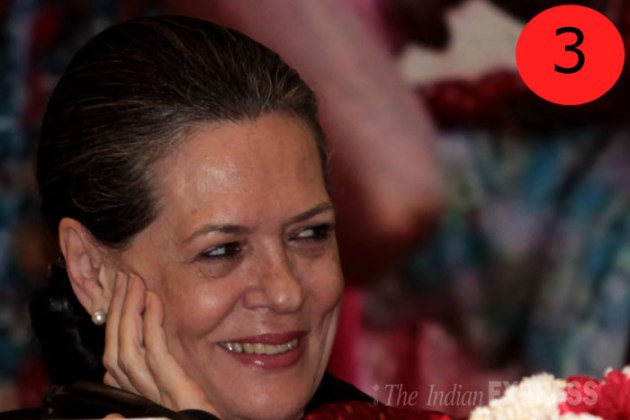 2 / 49
2 / 49Sonia Gandhi (67), Congress president and UPA chairperson WHY: She still has the last word in the Congress. Although she has passed on the baton to son Rahul amid speculation over her health, Gandhi remains the guiding force and final authority — be it on organisational affairs including selection of chief ministers and policy decisions of the UPA government — and continues to be the UPA fulcrum. Known to be pragmatic, she continues to be the force behind the government’s populist measures and will take crucial decisions on alliances.
 3 / 49
3 / 49Arvind Kejriwal (45), AAP leader, former Delhi Chief Minister WHY: For catapulting a 14-month-old political party to power in Delhi. In an election year, he kept his 49-day government in the news — be it through an ill-timed dharna or by perpetuating his brazen style of politics of naming and shaming. While declaring the Aam Aadmi Party’s priorities for the Lok Sabha elections, he put out what he claimed was a list of 28.
 4 / 49
4 / 49Pranab Mukherjee (78), President WHY: As India goes into what is likely to be one of its most keenly fought elections and with pollsters predicting a hung Parliament, Mukherjee, often known as the best prime minister India never had, will hold the key to government formation.
 5 / 49
5 / 49J Jayalalithaa (66), Chief Minister, Tamil Nadu WHY: The formula is rather simple but the potion is potent — her party, AIADMK, has an edge in each of the 40 Lok Sabha seats in Tamil Nadu and Puducherry, and is flexible enough to join the NDA or the third front or any other coalition of convenience that may emerge post-election. The ongoing trouble in the rival’s family can only help her party. Little wonder that she is sitting smug, reluctant to gift seats to any.
 6 / 49
6 / 49Mamata Banerjee (59), Chief Minister, West Bengal WHY: With both the UPA and NDA trying to woo her, Mamata and her Trinamool Congress are all set to play a pivotal role in government formation after the Lok Sabha elections.
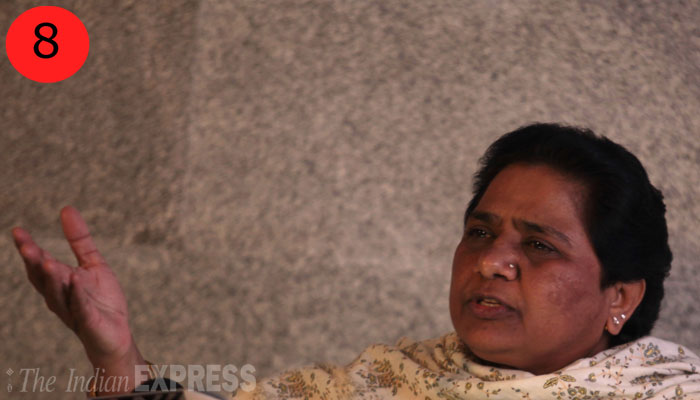 7 / 49
7 / 49Mayawati (58), President, Bahujan Samaj Party WHY: Her magic may have waned — especially after the drubbing her party got in assembly elections in four Hindi-speaking states late last year — but her support base in UP will make her influential in the event of a fractured national mandate this year.
 8 / 49
8 / 49Justice P Sathasivam (64), Chief Justice of India WHY: Author of several path-breaking judgments, Justice P Sathasivam has led from the front to have the apex court get down once again to the serious business of interpretation of laws. While writing an array of judgments on electoral reform and on issues relating to women and children, Justice Sathasivam, after he assumed the CJI’s office, revived hearing on constitutional matters and also those pending for years together. Ever since the larger benches have been constituted, the SC has delivered several landmark verdicts.
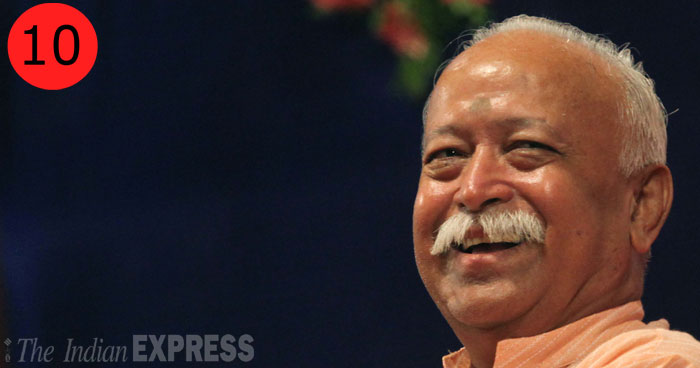 9 / 49
9 / 49Mohan Bhagwat (63), RSS chief WHY: With the BJP mounting a fierce campaign to dislodge the Congress-led UPA government at the Centre, he commands authority as the head of the saffron parivar of which BJP remains a part. He has got RSS affiliate organisations to coordinate with BJP in mass mobilisation programmes in an election year. This wasn’t the case in the 2009 Lok Sabha elections.
 10 / 49
10 / 49Rajnath Singh (62), BJP president WHY: As president of the principal Opposition party which is projecting itself as the alternative to incumbent Congress, Rajnath Singh presides over the organisational preparations of the BJP for the Lok Sabha elections.
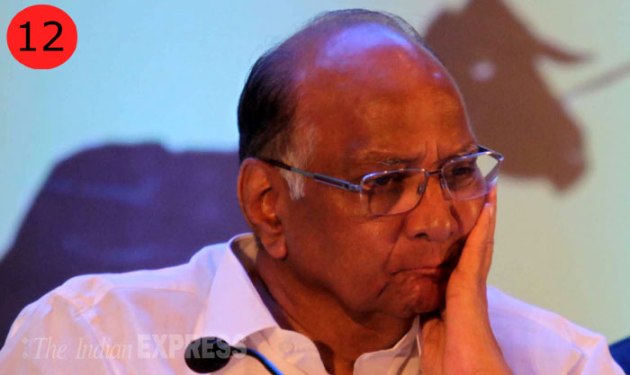 11 / 49
11 / 49Sharad Pawar (73), NCP chief and Union Agriculture Minister WHY: The veteran politician punches more weight than the numerical strength of his NCP in Lok Sabha. His friendship with leaders across the political divide keeps the Maharashtra leader relevant in national politics.
 12 / 49
12 / 49Sushma Swaraj (62), Leader of Opposition, Lok Sabha WHY: As the BJP seeks to ride on anti-Congress sentiments, the Leader of Opposition in Lok Sabha has a crucial role in pinning down the UPA government on a host of issues with her oratory, inside and outside the House.
 13 / 49
13 / 49Arun Jaitley (61), Leader of Opposition, Rajya Sabha WHY: Among the few who can claim proximity to BJP prime ministerial candidate Narendra Modi. He also remains at the core of shaping BJP’s position on key political issues.
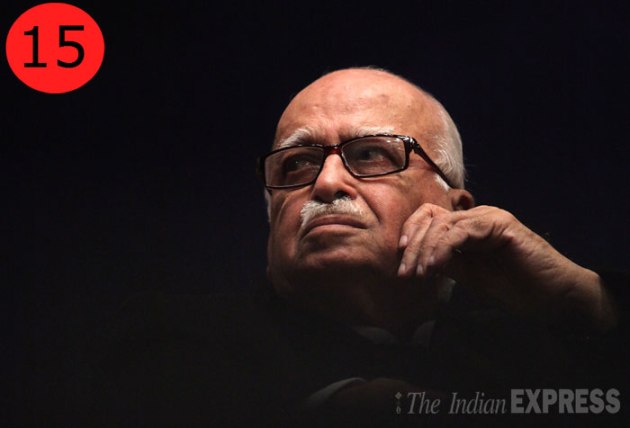 14 / 49
14 / 49L K Advani (86) BJP leader WHY: The BJP patriarch’s political experience remains a key asset for the BJP to guide it through various political issues.
 15 / 49
15 / 49Raghuram Rajan (51), Governor, Reserve Bank of India WHY: He has taken a host of measures to stabilise the rupee which has been plunging against the US dollar, build up forex reserves, reduce current account deficit and bring down inflation. He has announced several plans to improve financial inclusion and monetary policy. He has so far refused to reverse the monetary policy stance of his predecessor D Subbarao.
 16 / 49
16 / 49P Chidambaram (68) Union Finance Minister WHY: The few economic initiatives that the government has taken this year largely flow from his office. These include projects cleared by the Cabinet Committee on Investments, clearing of conditions for telecom auction, and his joint fight with RBI Governor Raghuram Rajan to tame inflation, which has started to show results after stubbornly staying up seven years.
 17 / 49
17 / 49Amit Shah (50), BJP General Secretary WHY: A close political confidant of BJP’s prime ministerial candidate Narendra Modi, he is involved in the party’s election management strategy for his prime ministerial bid.
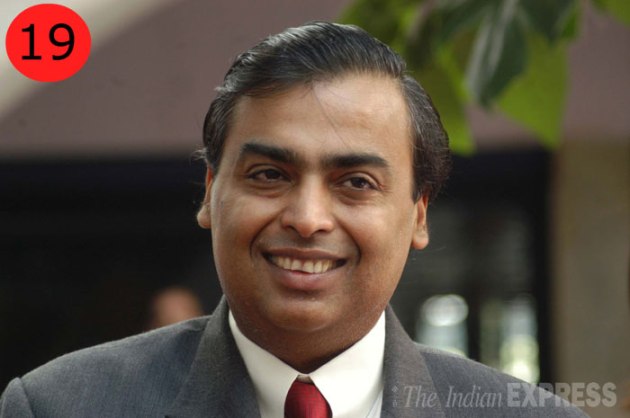 18 / 49
18 / 49Mukesh Ambani (56), Chairman, Reliance Industries WHY: With a net worth of $21 billion, Mukesh Ambani retained his title as India’s wealthiest man for the sixth year in a row, bucking the broader slowdown in the economy that saw the collective wealth of India’s 100 richest persons soar by 3 per cent.
 19 / 49
19 / 49Naveen Pathnaik (67), Chief Minister, Orissa WHY: Because as chief of Biju Janata Dal, he may hold the key to government formation in 2014. Patnaik is perhaps at the peak of his political career, wooed assiduously by BJP as well as the Third Front. Despite lording over the state for 14 years, his popularity has not waned as he is all set to win a record fourth consecutive assembly poll this year.
 20 / 49
20 / 49Jagan Reddy (41), President, YSR Congress WHY: As perhaps the most popular political leader in Andhra Pradesh, he holds all the aces for the general elections. His YSR Congress Party is expected to sweep the Assembly elections in Coastal and Rayalaseema districts and perform better than the Congress and TDP in the Lok Sabha elections. He is also expected to play a key role in the formation of the next government at the Centre.
 21 / 49
21 / 49Mulayam Singh Yadav (74), President, Samajwadi Party WHY: As leader of the third largest party in the Lok Sabha, Mulayam has added weight with his party ruling the politically crucial Uttar Pradesh.
 22 / 49
22 / 49Cyrus Pallonji Mistry (45), Chairman, Tata Group WHY: Having completed one year as the chairman of the largest diversified Indian business group, Mistry demonstrated a smooth leadership transformation and had a steady start. He also built a young team of his own during the year that may last with him during his tenure as the chairman of the group.
 23 / 49
23 / 49Priyanka Vadra (42), Congress leader WHY: Because she is the biggest influence on Congress vice-president Rahul Gandhi. Even mother Sonia Gandhi turns to her for vital political inputs. Although her political activities are confined to their Lok Sabha constituencies, she has started playing a much larger role behind the scenes in formulating the party’s campaign strategy.
 24 / 49
24 / 49V S Sampath (64), Chief Election Commissioner WHY: Because as CEC, he will preside over independent India’s biggest-ever election.
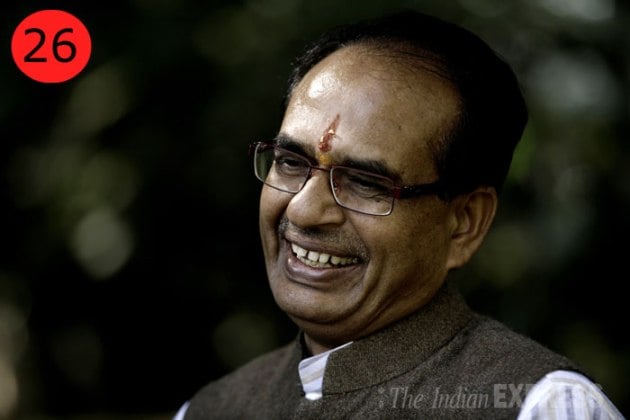 25 / 49
25 / 49Shivraj Singh Chouhan (55), Chief Minister, Madhya Pradesh WHY: The unassuming leader helped the BJP return to power for the third time in the MP assembly polls. Having completed eight years in office, he has become the longest serving non-Congress CM in a state which was once a Congress bastion.
 26 / 49
26 / 49 27 / 49
27 / 49R M Lodha (64), Chief Justice designate WHY The soon-to-be Chief Justice of India will have five months in office after he takes over in April-end. Besides presiding over a bench that deals with an array of cases, he is also the Executive Chairman of National Legal Services Authority.
 28 / 49
28 / 49Nitish Kumar (63), Chief Minister, Bihar WHY: Took a gamble by standing up to Narendra Modi. Even after dumping the BJP, is holding fort despite having only 91 MLAs in the House.
 29 / 49
29 / 49Narayanaswami Srinivasan (69), President, The Board of Control for Cricket in India (BCCI) WHY: For steadfastly holding his ground despite the unyielding storm around him when his son-in-law Gurunath Meiyappan was arrested for alleged involvement in IPL betting and his position as Indian cricket's supremo seemed untenable.
 30 / 49
30 / 49Siddaramaiah (65), Chief Minister, Karnataka WHY: An OBC leader, he is key to creating a coalition of the backward, Dalit and minority communities for the Congress in Karnataka.
 31 / 49
31 / 49Uddhav Thackeray (53), president, Shiv Sena WHY: Bearer of Bal Thackeray's legacy and as the head of the Shiv Sena, he heads the fourth largest political party in Maharashtra. He is holding the party together after his father’s death.
 32 / 49
32 / 49Vasundhara Raje (60), Chief Minister, Rajasthan WHY: Led the BJP to a thumping victory in the assembly polls for the second time. Bagged a record 163 of the 200 seats in Rajasthan.
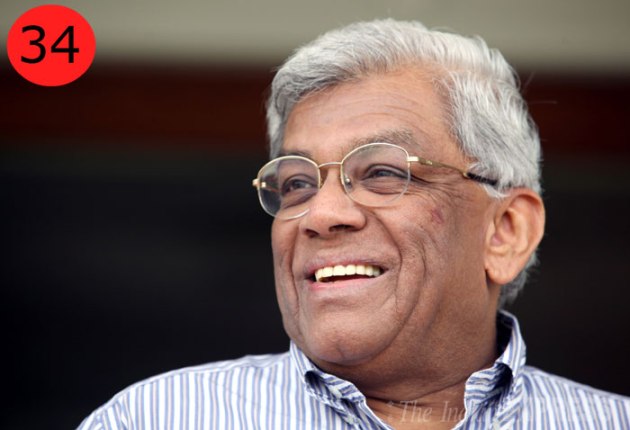 33 / 49
33 / 49Deepak Parekh (69), Chairman, HDFC Ltd WHY: The man for all seasons, Delhi’s policymakers value his feedback. He chairs several government panels, including the High Level Committee on Infrastructure Financing, and is on the board of some of the largest companies.
 34 / 49
34 / 49Mahendra Singh Dhoni (32), Captain, Indian cricket team WHY: He added the Champions Trophy title to his burgeoning trophy cabinet, besides overtaking Sourav Ganguly as the most successful Indian Test captain.
 35 / 49
35 / 49Lalu Prasad (66), RJD president WHY: No leader has been able to hold his party even after conviction in a corruption case the way Lalu has.
 36 / 49
36 / 49Raman Singh (61), Chief Minister, Chhattisgarh WHY: Despite the setback caused by the Darbha attack and an eroding base among tribals, he managed to pull the BJP from the brink in the assembly polls and clinched his third consecutive victory.
 37 / 49
37 / 49Anil Ambani (54), Chairman, Reliance ADA Group WHY: His group is among India's top three private sector business houses with assets in excess of Rs 180,000 crore, a net worth to the tune of Rs 89,000 crore, and with interests ranging from communications to financial services to power to infrastructure and entertainment.
 38 / 49
38 / 49Nandan Nilekani (58), Chairman, UIDAI WHY: Nilekani’s Aadhaar experiment has changed the way e-governance is perceived in India. For the UPA government, it may be a missed opportunity that Aadhaar as a means to cut graft has come a bit too late, but the strongest endorsement for his model has come from the RBI which has made Aadhaar issued to 56 crore Indians the basis of banking identity.
 39 / 49
39 / 49MK Stalin (61), Treasurer, DMK WHY: He is the prince of a powerful regional party that has been a key factor in Delhi politics in the past couple of decades.
 40 / 49
40 / 49Anand Mahindra (58), Chairman & MD, Mahindra & Mahindra WHY He is India Inc’s Mr Clean. Satyam Computers, which he acquired in 2009 and is now called Tech Mahindra, has become the country’s fifth largest IT company with annual revenue of $2.7 billion.
 41 / 49
41 / 49Omar Abdullah (43), Chief Minister, Jammu & Kashmir WHY: Despite the rift with ally Congress, Omar has managed to cling to power and is likely to complete his term. Also, after a turbulent 2009 and 2010, he has managed to keep protesters away from the streets, even after the hanging of Afzal Guru.
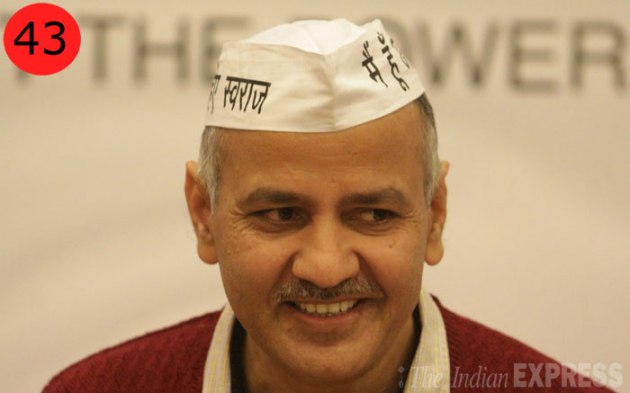 42 / 49
42 / 49Manish Sisodia (42) , Former Delhi Minister for Urban Development, Transport, Education, PWD and Revenue
WHY: The virtual second-in-command of the Aam Aadmi Party played a crucial role with party chief Arvind Kejriwal consulting him on all important issues. He holds posts in all major AAP bodies. 43 / 49
43 / 49Rahul Bhatia (52), Chairman, IndiGo
WHY: At a time when other airlines in India are losing money, IndiGo has been making steady profits. 44 / 49
44 / 49Fali S Nariman (85), Senior advocate and constitutional expert
WHY: One of the most respected lawyers in the country, judges are known to seek his opinion. 45 / 49
45 / 49Manohar Parrikar (58), Chief Minister, Goa
WHY: The Goa CM is a rising voice in the BJP. His simple lifestyle and no-nonsense attitude have drawn inevitable comparisons with Arvind Kejriwal. 46 / 49
46 / 49Akhilesh Yadav (40), Chief Minister, Uttar Pradesh & Samajwadi Party state president
WHY: He led the party in the 2012 Assembly elections and won with an absolute majority — a feat his father had never achieved. But it has been downhill ever since, with the Muzaffarnagar riots a blot he will find hard to rub off.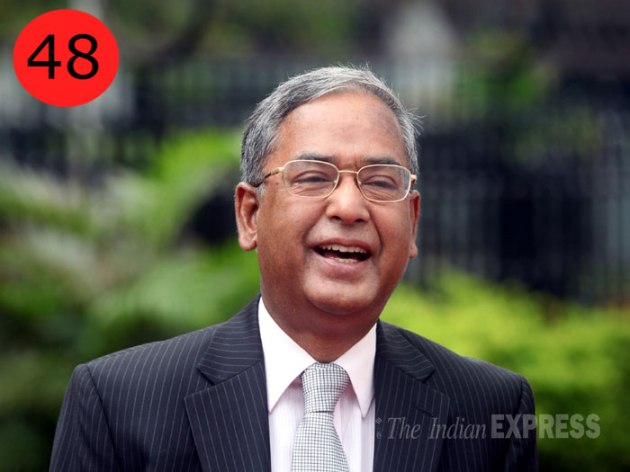 47 / 49
47 / 49UK Sinha (62), Chairman, Securities and Exchange Board of India
WHY: Under Sinha's chairmanship, SEBI moved strongly to safeguard the interests of small investors against illegally-run collective investment schemes. The SEBI Bill is, however, awaiting Parliament's approval. 48 / 49
48 / 49A K Antony (73), Union Defence Minister
WHY: The unflinching Sonia loyalist is one man whose personal integrity has remained unquestioned in a scam-tainted UPA-II. But it has also been a term marked by underperformance on crucial reforms. 49 / 49
49 / 49N R Narayana Murthy (67) Executive chairman, Infosys
WHY: Murthy, who retired in 2011, came back last year to rescue a struggling Infosys. Eight months later, the company is already showing signs of a turnaround. It has also narrowed down the valuation gap with TCS, its fast-growing rival.











